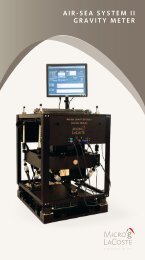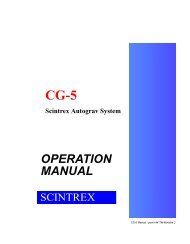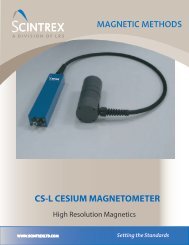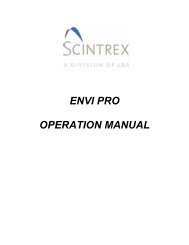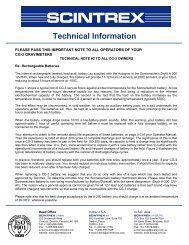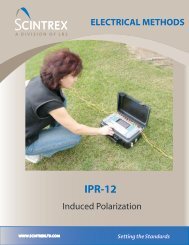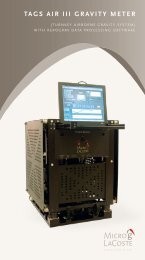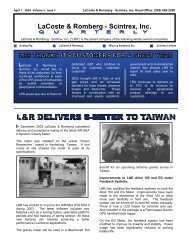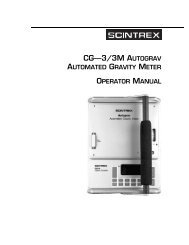Cs-3 Manual - Scintrex
Cs-3 Manual - Scintrex
Cs-3 Manual - Scintrex
Create successful ePaper yourself
Turn your PDF publications into a flip-book with our unique Google optimized e-Paper software.
• fast response• low susceptibility to the electromagnetic interferenceMagnetic field measurements performed by the CS-3 is based on quantummechanics principles, and the phenomena of optical pumping andself-oscillation. When properly oriented in relation to the ambient magneticfield, cesium vapor in the sensor oscillates continuously by itself without anyassistance. The frequency of oscillation (defined as the Larmor frequency) isproportional to the ambient magnetic field.The sensor outputs a signal at the Larmor frequency which is normallyprocessed by an external magnetometer processor linked to the system. Themagnetometer processor converts the Larmor frequency into digital magneticfield readings and presents them for display and recording. Modern magneticprocessors have a resolution of 0.001 nT and read 10 times each second orfaster.In summary, the CS-3 offers distinct and substantial benefits in measurementof magnetic fields due to the principles of both optical pumping andself-oscillation. These advantages are described in the next two sections.Advantages of Optical PumpingThese benefits are shared by all well designed optically pumpedmagnetometers regardless of which atoms (cesium, rubidium, potassium orhelium) are being pumped, and regardless which of two principles ofoperation is utilized (self oscillation, or locked oscillation).High SensitivityDue to the narrow resonant linewidth and good signal to noise ratio thesensitivity of optically pumped magnetometers is in the range of few pT(1pT=0.001nT) in the measuring bandwidth of 1Hz. In contrast to the protonprecession magnetometers, the sensitivity does not deteriorate as themeasured ambient field decreases.Continuous SignalThe operation of the optically pumped magnetometers is not cyclic. Highlysensitive readings could be obtained at the high repetition rate.iiCS-3 <strong>Manual</strong> - part # 762701 Revision 1.0



